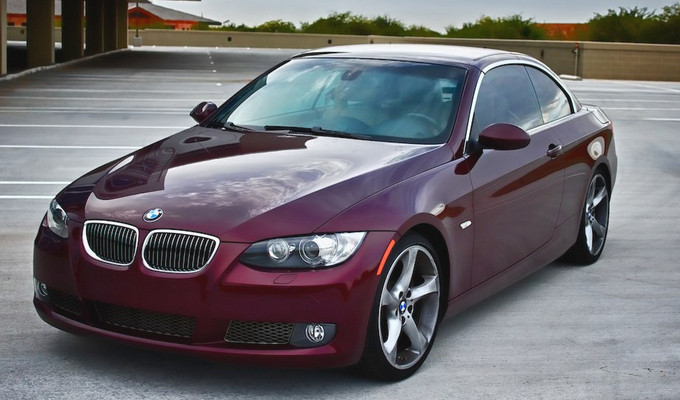Vehicle Identification Number (VIN)
The automakers provide their vehicles directly from the factory with the number, so that the vehicles can be identified later beyond doubt. In order for such identification to be possible, the number is subject to a standard.
This was passed in 1981 and has since been used by all major automakers. The international abbreviation of the Vehicle Identification Number is VIN.
What is it VIN?
Each car, or motorcycle, has a unique chassis number, based on which it can be clearly identified.
The vehicle identification number always consists of 17 characters and always ends with 6 digits. It is possible to use all letters of the alphabet except I, Q and O, as well as numbers from zero to nine.
The vehicle identification number is divided into several blocks, which provide information about the following vehicle data: model year, manufacturer, engine type, model series, manufacturer's plant as well as the consecutive vehicle number.
It should be noted that the North American automakers use a modified and at the same time somewhat stricter standard. This contains more information, but is nevertheless compliant with the ISO standard, so that no confusion or misunderstandings can occur.
Manufacturers located in the countries of the European Union comply with the ISO 3779 standard.
The value of the digits in the VIN:
1 - Country the vehicle was manufactured in USA, Germany, Japan or South Korea etc.
2 - Motor Company оr Manufacturer - Ford, Lincoln, GM, BMW, Toyota etc.
3 - Car Make or Vehicle Type - Focus, Corolla, Impala, Prius etc.
4 and 5 - Car Line Code and Carline/Series - it distinguishes between different types of models and car trim options
6 - Body Style - 2-door coupe, 4-door sedan, minivan etc.
7 - Restraint Codes - include information about air bags, seat belts, occupant sensors, etc.
8 - Engine Code - symbol for determining the type of engine, its displacement, number of cylinders and fuel system of the car
9 - Check Digit - for manufacturers in the United States and China, this is a special check digit, which is one of the ways to protect against counterfeit numbers. In other countries this is additional information about the car. For example, a comprehensive method for checking the model year
10 - Model Year - model year of the car, for example: B=1981, W=1998, L=2020, E=2029 etc.
11 - Assembly Plant - the factory where the car was actually assembled
12-17 - Sequential Number - this is the serial number that identifies the particular vehicle.
Accordingly, the first 3 digits of the VIN, the so-called WMI (World Manufacturer Code), indicate from which manufacturer the vehicle in question originates. The first letter stands for the region from which the manufacturer comes from. In combination with the second digit, the country can be determined.
Examples are the following VIN number combinations:

Examples of world manufacturer codes used around the world are:
Examples of world manufacturer codes used around the world are:
- 1G: General Motors
- 1G1/1GC: Chevrolet
- JHL/JHM: Honda
- JT: Toyota
- SAL: Land Rover
- TMB: Skoda
Today, vehicle identification numbers are engraved or laser-applied, so they will still be visible with x-rays if they have been removed.
The VIN is unrelated to personal data and does not say anything about you as a vehicle owner. The VIN is also nothing secret, because it is in many places of your car and is accessible to third parties.
Why VIN is needed?
The vehicle identification number itself is used for several purposes. For example, it is needed to be able to produce appropriate vehicle documents.
At the same time it should make the job of car thieves more difficult. For this purpose, the number is incorporated in the chassis or in the chassis of the car. For this reason one speaks also often of the so-called chassis number.
However, it should be noted that the classic chassis number was replaced in 1981 by the vehicle identification number. The numbers themselves are now incorporated under a very high technical effort in the chassis of the cars. This is due to the car thieves, who now have very well equipped workshops and try to fake the numbers.
Also, the vehicle identification number is important in the settlement with the insurance.
Where do you find your VIN?
The vehicle identification number is attached in several places.
You will find your VIN in your service checkbook as well as in your vehicle documents under the name "Vehicle Ident. No."
It can also be found on the car's frame, in the engine compartment, in the trunk, under the hood, on the dashboard, under the windshield and in the driver's door. It always depends on the model and manufacturer.
For cars that are manufactured in Europe or intended for European market, it is usually found in the engine compartment, in the car from and for the US left bottom of the windshield so that it is easily recognizable from the outside.
Conclusion
As a personal fingerprint of your car, the vehicle identification number is always relevant when it comes to incidents, so for example, your car is stolen or you have to make a settlement with insurance.
The vehicle identification number itself will last a lifetime of the vehicle. This means that it is not possible to change them legally. When purchasing a car with a modified VIN, you should be very careful. This usually has a criminal background.

